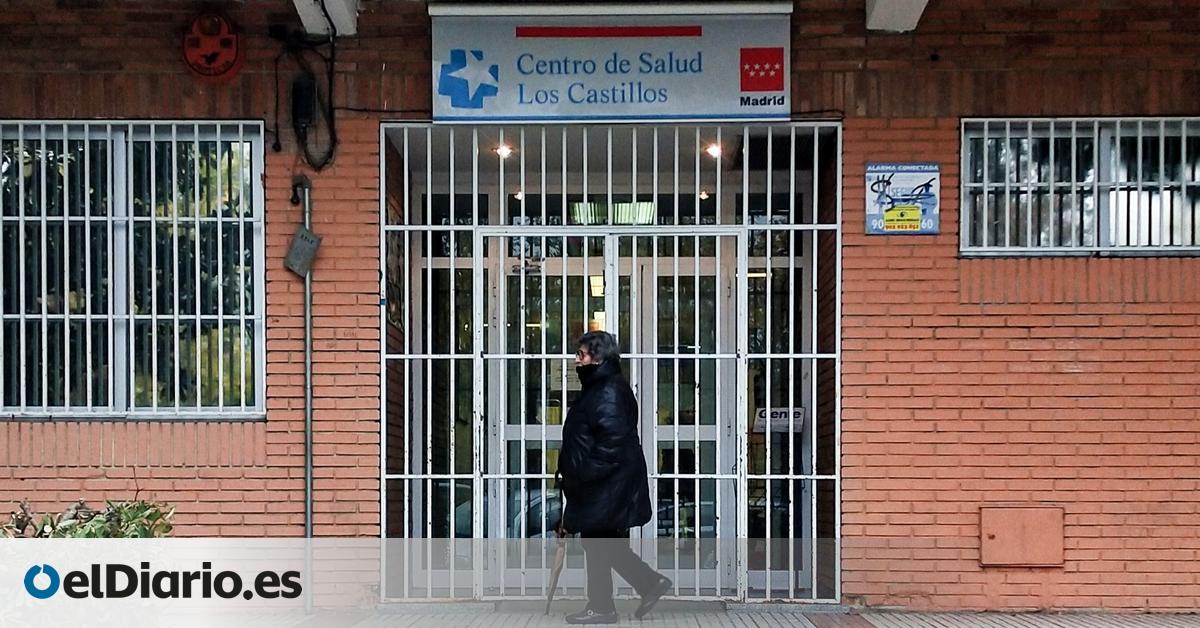
The aging of the workforce and temporary employment continue to be the great Achilles heels of the public health system in Spain and have “contributed to generating the current human resources problems” that occur in it. It is the main conclusion of one of the studies that are part of the 2024 report of the Spanish Society of Public Health and Health Administration (SESPAS). If we translate reality into figures: 45% of Primary Care doctors are over 55 years old – in hospitals the figure is reduced to 26% – and 42% of the National Health System staff – and 33.6% of doctors – have interim or substitute contracts, despite the 2022 reform that requires staff to be stabilized.
The sum of these “weak points of the system” produce “excessive staff turnover”, which can affect “productivity, the quality of service through the loss of individual or team experience” and contributes to “ reinforce the perception of instability,” says the report The challenges of governance of human resources in public health, prepared by Javier Hernández Pascual, from the Institute of Fiscal Studies, diving, among others, into the data from the Active Population Survey (EPA).
The public system will face the departure of many professionals until 2026: between 16,000 and 18,000 doctors per year until 2026 (which represents between 15.1% and 16.9% of doctors with an indefinite contract in 2023) and between 21,000 and 28,000 nurses (between 17 and 23% of permanent professionals in 2023), according to the forecasts collected in the study and based on sample data. “The variability can be great and recent reforms in the incentive rules to prolong the retirement age could alter the behaviors of professionals,” the author clarifies. Although the situation is complex in all areas of the SNS, it is especially so in what the study calls “medical and dental activities”, that is, what is outside of hospital care.
“The big blow has happened and there is less left”
Those who are now retiring are professionals born “after 1958, the cohorts born as baby boomers, who populated the institutions of the National System in the 1980s.” The increase in departures of doctors grew from 3.3% in 2017 to 18.4% on average in 2023, although it is already showing signs of stabilizing, confirmed researcher Patricia Barber from the University of Las Palmas de Gran Canaria, author of two other studies in the report.
“The big blow has happened and there is less left,” he said in a press conference held this Thursday. In 2021 and 2022, the data reveal that more professionals left the system “than in estimates made in past cohorts,” among other things, the researchers conclude, due to “professional burnout caused by the pandemic.”
In hospitals the changeover has occurred more quickly. Especially in the case of nurses. The older ones are concentrated in health centers. This is due to the fact that many have moved from Primary Care while in hospitals “the aging rate has been reduced by up to 17%” compared to 37% in outpatient clinics.
The measures that have been taken and those that are missing
A few years ago, administrations began to take measures in response to what was coming. The Ministry of Health and Social Security launched a pilot program at the end of 2022 to encourage Primary Care professionals who delay their retirement. The effects of this plan, the report says, are not yet evident in the data.
On the other hand, with new professionals joining the system and taking over from those who leave it, Spain must make an important decision about whether it wants to “import” or “produce” doctors, suggests another study incorporated into the report by Barber. and Beatriz González López-Valcárcel and titled What do we know and what should we know about the imbalances in doctors in Spain? ̃Diagnosis and proposals.
How can we plan how many nurses we need if we don’t know how many there are?
Patricia Barber, researcher at the University of Las Palmas
“A social debate is necessary on this issue, as well as on the current differentiation between public and private universities, which causes problems of horizontal equity,” says the research. At the moment, Spain is more of an “importing country”: 16% of the doctors who obtained a MIR position in 2022 were foreigners and the speed of homologation of degrees has become, the researchers say, “a human resources policy.” ”, even after the increase in clausus numbers in medical schools starting in 2022. Last year, around 6,300 students graduated in medicine and 8,500 MIR places were opened.
Among the important things to do is the Registry of Health Professionals, which has been worked on since 2006 without a final result, continues the expert. “How can we plan how many nurses we need if we don’t know how many there are? Now we are governed by the data from the Medical Colleges but I have my doubts because some do not unsubscribe or are in more than one specialty,” explained Barber, who attributes the delay to the fact that “some communities do not collaborate with the Ministry ”. “Imagine a community that does not register its citizens. It is very strong that we do not know how many doctors we have and what they do,” she elaborated.
Another blind spot in the system when planning for the coming years, the expert has also highlighted, is the “hole” in private healthcare. “The prevalence of multiple employment, disaggregated by areas and specialties, dedication, labor and commercial contractual forms, and remuneration, is essential information to better understand the functioning of markets and predict trends,” she concludes.
Source: www.eldiario.es

